Uncategorized
Singer and manager of Cambalache Pancho Chavez
Peru continues to give much to talk about with regards to salsa and the guest we have this time is clear proof of that. We are talking about the talented singer and backup singer Francisco ”Pancho” Chávez, who has been kind enough to talk to us to reveal unpublished details of his life and career in his native country and, of course, in the United States.
Pancho, who currently serves as vocalist and manager of the Orchestra Cambalache, has a very long career in the U.S. Latin music scene, to the point that his group has established itself as one of the top salsa bands in the northwestern United States. It is a great honor for us to have an artist of this stature in this January 2024 edition.
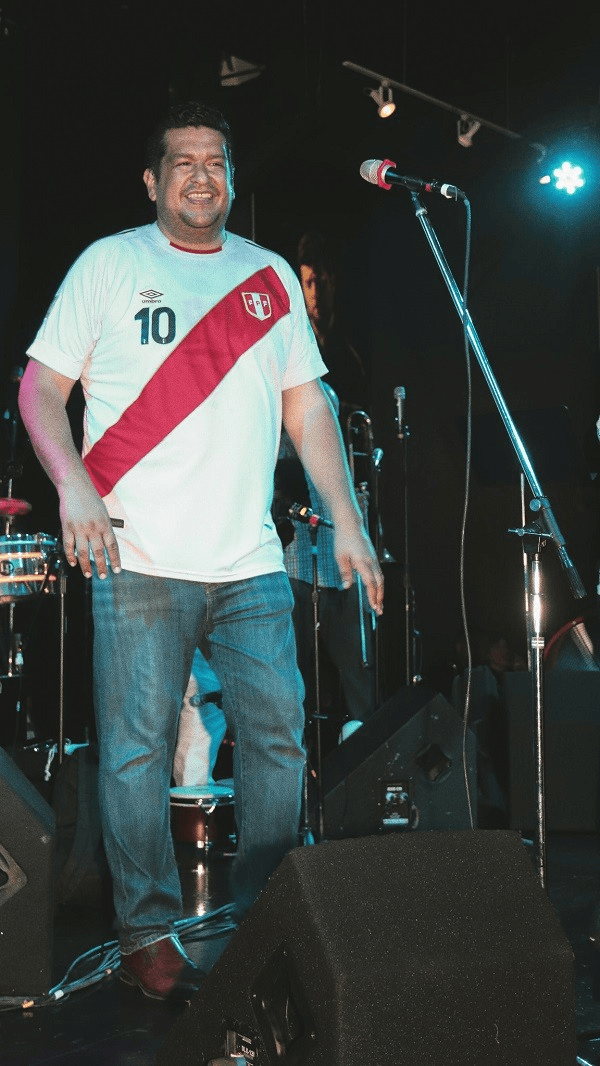
Pancho’s Musical beginnings
Pancho’s first contact with music happened thanks to his mother’s family, many of whom were musicians. Although the young man never go into business in his country, he was able to see how to handle things thanks to his relatives until moving to the United States in 1997.
One or two years later, someone gave him a double album by El Gran Combo de Puerto Rico that, he says, he played a million times because he really liked it. This material was one of his great inspirations to dedicate himself to salsa as a genre and nobody could change his mind.
It was in Seattle that he started making music with college friends when he was already living in the United States, implying that he was not yet formally dedicated to music. In fact, Pancho was studying business at the time and was looking for a small musical group with other young college students he met around 1999.
This group turned out to be Cambalache, which he founded along with Colombian musician Camilo Suarez. This would be the first and only group to which the Peruvian has belonged, so everything he knows about music and the industry was learned with this same project.
He always stood out for his talent to sing and do vocals, but he also learned to play some instruments such as the congas, timbales, bongos, cowbells, among others. He also learned a bit of sound engineering and can work a little in this area, although he recognizes that he is not yet an expert.

Recruiting talent for Cambalache
Pancho says that there were not many Latinos at the university back then, so he and Camilo forged a strong friendship and shared many common interests, especially music.
At the time, both were facing the economic problems typical of a college student and saw music as an opportunity to make a little extra money during their summer vacation. Camilo knew other musicians, so he contacted them and proposed them to join the orchestra they were creating.
Pancho and Camilo had thought of a group of five or six people, but there were so many interested in joining the orchestra that the first rehearsals included about 13 people. In the end, solely for economic reasons, they only accepted nine members, of which only he remains.
All these members, including Camilo himself, ended up working with other artists and groups and obtaining new opportunities in the musical field.
Clasiqueando
Cambalache’s first album was ”Clasiqueando”, which was released almost 20 years ago. Pancho assures that the acceptance to the material was very nice, even though the details are not so refined and worked.
The success they had was a surprise for Pancho and the rest of the group, since the scope they expected was local. “We were surprised that people called us from many countries saying they had heard the album and loved it. There were even companies in countries like Japan and Italy that wanted to buy us songs for distribution” Pancho said on the issue.
It was a great start for everything that came next for the group in the years to come.
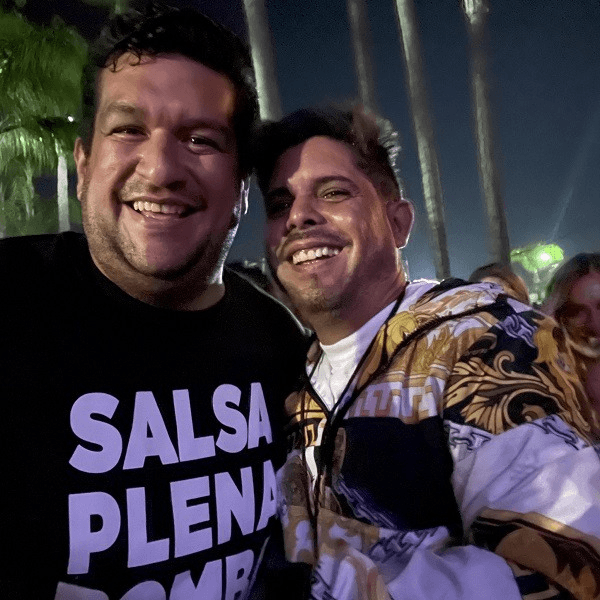
Why choose Seattle
Pancho and his musicians chose Seattle as their base of operations because he and all the members of Cambalache have lived there for many years. That is exactly the city the Peruvian chose to make his living there and he never left it.
It is also in Seattle where they all have their jobs and occupations outside of music and where they meet to rehearse and deal with all the affairs related to the orchestra.
In the beginning, it was very hard for them because the Latino audience was not very large when they created the project. However, that has been changing, and today, many Latinos live in the city and maintain their Latino customs, including music.
Other tasks besides music
In addition to being the vocalist and manager of the orchestra Cambalache, Pancho is also a business administrator and manages his own event company whose main element is, of course, music. In this company, Pancho and his staff are in charge of hiring artists and bands for private events. Of course, Cambalache is involved in the operation of this project.
The event center managed by the Peruvian singer has a capacity for 500 people and has its own stage. He rents it to hold events there and has all types of clients waiting.
They have hired artists such as Gilberto Santa Rosa, Tito Nieves, El Gran Combo de Puerto Rico, Willie González, Conjunto Bahía, Frecuencia Latina, among others.
Read also: Producer and saxophonist Martin Franco talks about his passion for music
Musical history of Roosevelt Cordova ”El Presidente de La Salsa”
Just as the case of Cuba and Puerto Rico, Peru has also given birth to many salsa exponents worthy of being highlighted and one of them is the talented Roosevelt Cordova, artistically known as ”El Presidente de La Salsa”.
The sonero has a very interesting career behind him, so we decided to contact him and know a little more about his personal and professional life. Roosevelt responded by thanking us for the opportunity and finally, we were able to agree on a day and time to talk about issues of interest around his figure.

His taste in music since he was a child
As has happened with many other salseros, Roosevelt also fell in love with music when still a child, but without knowing at the time that this is what he would dedicate his life to later.
He always saw his family enjoying music at amateur level, which awakened in him a taste for this branch of art. However, his journey in this world did not begin with salsa, but with Peruvian waltzes and Creole music. It was not until he turned 17 that he became interested in salsa because an uncle of his signed him up for a contest called ”Buscando Un Sonero”, taking third place among 84 participants in total.
Thanks to his performance in the contest, he was proposed to join the orchestra Camagüey, but his father refused because of all the excesses that an artist must face and he considered that his minor son was not ready for that. On the contrary, he preferred his son to be interested in other activities such as sports and leave music for later.
In addition to this, the great references in which Roosevelt was inspired to follow his path have been El Gran Combo de Puerto Rico, Willie Rosario, Gilberto Santa Rosa, Héctor Lavoe, La Fania All Stars, among others.
Roosevelt in Los Angeles
It wasn’t until Roosevelt, at the age of 25, left for the United States that he could pursue his dreams and become the artist he dreamed he would be.
He did not initially plan to devote himself to music, as he simply wanted to progress in life like any other immigrant, but it was not long before he decided to take the bully by the horns and return his great passion. It is then when he recorded an entire Peruvian Creole music album, but soon left this genre to return to recording salsa.
This is how he began to seize every opportunity to participate in salsa orchestras to gain experience little by little.
The first group he belonged to was La Sonora Santiaguera, which he joined in 1998, but from then on, there were many others with which Roosevelt learned much of what he knows today as an artist.
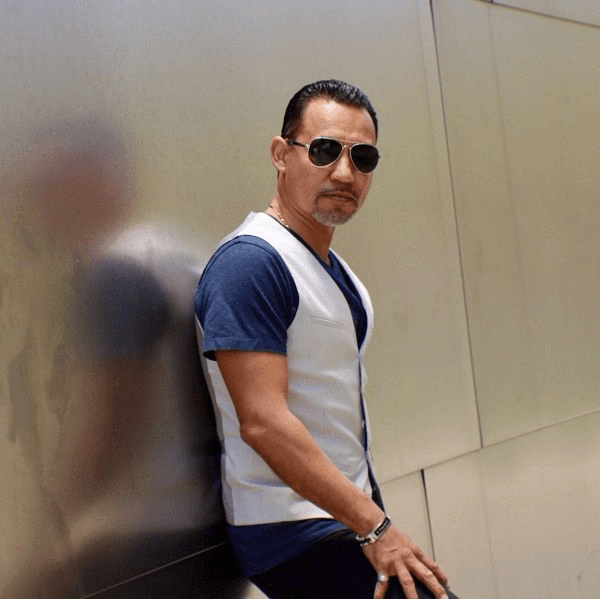
One of the most important orchestras he belonged to was Johnny Polanco Y Su Conjunto Amistad. After all the experience gained so far, Roosevelt was encouraged to personally look for Johnny to talk to him at El Floridita, where El Conjunto Amistad performed weekly.
The artist told the leader of the group he was a singer and wanted a chance in his group. After hearing him sing with his musicians that same night, Johnny invited him over to his home to give him a cassette with all the songs he had to learn to work formally with them. Two weeks later, he was already making his debut with Johnny and El Conjunto Amistad. His entry into the group coincided with the farewall of the lead singer, something that was just perfect for Roosevelt.
Other groups
After leaving El Conjunto Amistad, Roosevelt continued his career and joined Ángel Lebrón y Su Sabor Latino, with whom he recorded a full album. Some time later, he joined Guapacha Latin Jazz led by the Venezuelan Gil Tower, with whom the Peruvian has an excellent personal relationship, despite having separated professionally.
In 2011, he became part of Conjunto Oye, which Roosevelt thinks is the best moment of his career because he was able to be himself within the orchestra and express his art with independence, something difficult in his previous groups. It was here that he had the growth he really needed to get ready and to take up greater challenges in the future.
Solo career
The information we found about his solo career revealed that Roosevelt went solo in 2019, but he corrected us by saying that, in reality, his first solo album ‘‘Un Nuevo Cantante” was recorded in 2018, which is when he really decided to open paths on his own.
Although he says he is grateful to all the bands he has played in, he also adds that there comes a point in life where every artist wants to build his own path when he already fulfil the conditions for that. In his case, he already had experience in singing, composing and creating useful contacts, so he gave himself the opportunity to try. The best thing is that his wife supported him at all times and, today, she continues to be his rock in whatever he sets out to do.
He also noted that he dreams of having his own orchestra someday and that it is important to have dreams in order to get where you want to be.
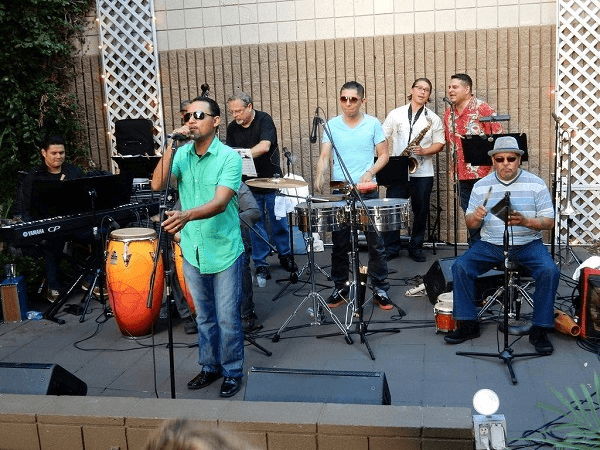
Roosevelt Cordova ”El Presidente de La Salsa”
When we wanted to know the origin of his artistic name, he laughingly told us that it is all abut his first name. Let us remember that Franklin Delano Roosevelt was President of the United States and his last name coincides with the singer’s first name.
When someone approached him to ask for a picture and asked his name, he said he had the same name as former U.S. President Roosevelt. Since this situation constantly repeated, his wife proposed him to use this to create a stage name for himself. That is how ”El Presidente de La Salsa” was born.
Llegó La Navidad
Currently, Roosevelt is currently promoting his new Christmas song ”Llegó La Navidad” of his own authorship. The idea of composing the song came from his wife and daughter, who insisted that it was time for him to release music written by himself.
So, he started the writing with the chorus and, from there, continued with the rest of the song. This is a technique he uses regularly when composing, as he ensures that people always remember the chorus more than the rest of the lyrics, so he always strives to have a catchy chorus that stands out in the public’s mind.
Read also: We bring trombonist Félix O. Rodriguez from Santurce to ISM
Producer and saxophonist Martin Franco talks about his passion for music
Martin Franco is a talented New York’s producer, sound engineer, composer, vocalist, percussionist and saxophonist who has had a big trajectory in music, which he shared with us in a half-hour conversation we had.
The artist of Colombian parents has been kind enough to reveal some of the most important details of his artistic career and the process by which he has managed to become the professional in the music field he is today, so we hope the information revealed here will be liked by those who usually follow our publications.

Martin’s interest in music while still a child
Something important we did not know about Martín is that, although both his parents are Colombian, they moved to Mexico when he was little and he spent the first eight years of his childhood in that country, before moving to Laredo, Texas.
At his new school in the US, he and his classmates were allowed to choose the instrument they liked most to learn to play it and the boy chose the saxophone, as he thought it was ”the most beautiful” at the time.
When Martin began his training, he discovered that he had a real taste for music and began to see it as a pleasant pastime and not an obligation, which led his mother to buy him his own saxophone and tell him to ”throw forward to music” if that was what he liked.
When he turned 12, the family moved back to New York, where Martin started to take music more seriously and meet people related to the industry. That was when percussion and tropical music also caught his attention, as Texas was packed with Mexican cumbia and other such rhythms.
On the other hand, New York had an immense Puerto Rican community and even his own aunts had married Puerto Ricans. Since this was the dominant community in the city in those years, Martin began hearing the conga, the keyboard, the trombone, the timbales and all the music made by the Fania. It was then when his musical tastes and plans began to change.
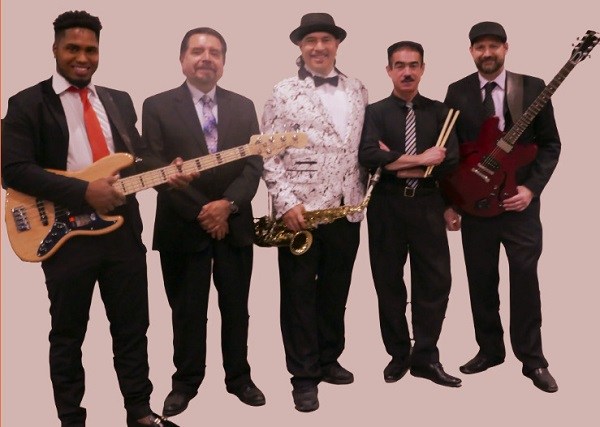
Martín’s beginnings in music in New York City
When he arrived in New York, Martin was not old enough to start a professional career, so he was engaged to play with friends in the streets, houses, apartments and private parties. However, this time helped him a lot to gain experience and his family was a great support in all this.
Martín, his family and some of his friends used to go to see live Latin artists and orchestras such as Celia Cruz, Héctor Lavoe, Tito Puente, Eddie Palmieri, Ray Barretto, Mongo Santamaría, among others. This also represented part of his motivation to do salsa in the future, although he also liked American jazz, which features the saxophone, his favorite instrument.
The mix of Latin and American genres resulted in the music that became popular in those years, and the music Martin makes today has much of what he learned back then. It was a mix of Caribbean tropical rhythms, jazz and American funk.
The musician considers that American and Latin rhythms have complimented each other over the years and he always tries to unite them in his performances, just like English and Spanish.
Mambo Soul Band
The name ”Mambo Soul Band” is a mixture of ”mambo”, which means ”to greet someone” or ”to communicate” in some African dialects, and ”soul” in English. This resulted in something like ”to communicate from the soul”, a concept that fascinated Martin. At the same time, both are the names for well-known musical genres, the one Latino and the other American.
He selected these genres as the name of his band because they contain what influenced him musically speaking. Latin jazz, soul and funk were the genres on which Martin based his songwriting for the band he was creating and he hired musicians who had experience with these rhythms. And in case they do not master any of them, he teaches them.
According to Martín, guitarists and bassists are the ones who usually have more problems when playing or learning to play these genres, while a percussionist usually has a greater dominion over these areas.
Another variant of the same project also led by Martín is Mambo Soul Jazz, which offers music and songs much more inclined to the American way. Mambo Soul Jazz is more aimed at quiet events where people do not usually dance much and just want background music to enjoy the evening.
The choose of one or the another will vary depending on the public of the day, although the basis of everything is always Latin music.
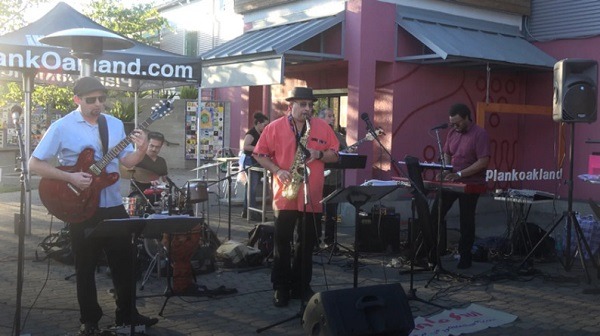
The most challenging aspects of the Latin music scene
In the view of Martin based on his experience, one of the most challenging things for him and his musicians is the economic issue. At the level where they are, they do not make big profits from their work, which contrasts to the high cost of living in California.
This situation has led many of the musicians to have parallel jobs that allow them subsistence since it is very difficult to make a living from music. The only alternative is to constantly tour with famous groups, but not everyone is willing to do that, so they prefer to work on other things.
In his particular case, he can afford to live only from music because he is the leader of the orchestra and the one who is in charge of getting contracts and shows for the group.
What we took from the conversation
From the beginning, we have noticed that Martin is a man absolutely passionate about his Latin roots and all that comes with them, especially the musical part. He always stressed that everything he does is for his love of music.
It is our pleasure to have the opportunity to talk with this great exponent of Latin and Afro-Caribbean music and we offer him our best wishes for success from now on.
We bring trombonist Félix O. Rodriguez from Santurce to ISM
The beautiful island of enchantment Puerto Rico has always given birth to many of the best salsa exponents of all time and the source of talent that has come out of that place has been inexhaustible. It is always a pleasure to be able to talk with a boricua of those who continue to leave their Latin heritage on high and, this time, it was the turn of the arranger, composer, sound engineer and trombonist Félix O. Rodríguez from Santurce.
It was very kind of the artist to give us a few minutes of his time to answer some questions for International Salsa Magazine and then we will be elaborating a bit on the topics we discussed with the salsa exponent.
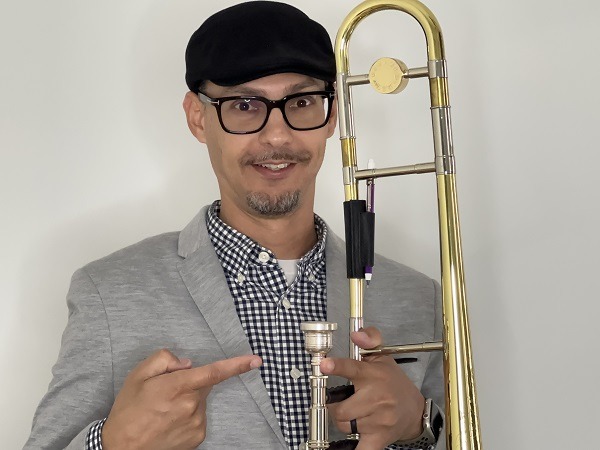
Félix’s beginnings in the music world
Félix’s first contact with music was at home, as his parents listened a lot to salsa, merengue, bachata and Latin music in general. While listening to this music, one of the things that attracted him the most was the sound of the trombone, especially in artists such as Willie Colón, Oscar D’ León, Gilberto Santa Rosa and many others.
Once he reached the seventh grade in school, he decided to take music lessons and chose that instrument to start his training due to his fascination with it, something that today he does not complain about because he assures that he has done very well.
In this learning process, noticing Félix’s interest in the trombone, his father, who was a professional orchestra musician, invited him to rehearsals so that he could soak up this whole atmosphere from an early age. It just so happened that the trombonist of this orchestra could not attend a rehearsal, so they gave the opportunity to the young boy to take his place for that night.
After two or three shows, Félix was selected as house trombonist when he was only thirteen years old. Although he was not old enough to enter nightclubs, he was allowed to be present because he was part of the orchestra that would play there.
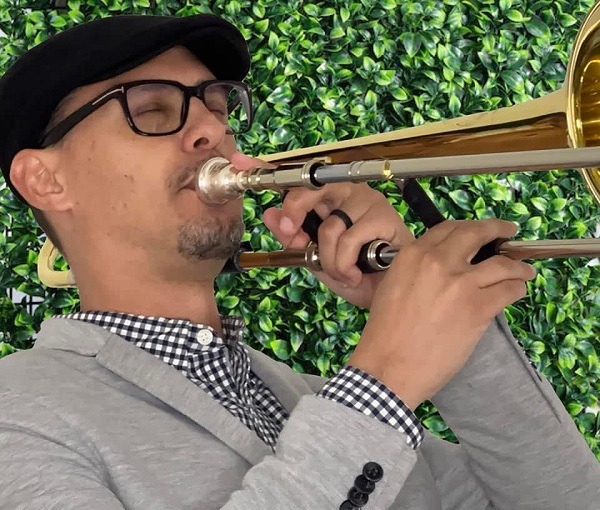
Orquesta Innovación and musical arrangements
When he entered high school, Félix began to study a bit about music theory and related topics such as chords, writing for a specific instrument, percussion and other subjects.
The young man worked so hard to train that, at only 15 years old, he was already perfectly capable of making musical arrangements, starting with transcriptions of music existing so far and copying notes from those songs. After several years on it, he finally started writing his own original music.
In fact, he went on to record a couple of songs with Orquesta Innovación (the second orchestra he was in), a couple of original songs that unfortunately were never released, but served as experience for what would follow.
University of South Carolina
Félix acknowledged with laughter that this was the only university he applied to, so it was almost an obligation for him to be admitted. Fortunately for him, it was.
He had to perform some tests with instruments and show examples of material of his own authorship to prove his musical skills. Everything he had learned so far was mostly based on salsa.
Thanks to his effort and dedication in previous years, he was admitted to the University of South Carolina, where he studied music theory and trombone for five years. While there, the musician learned everything necessary about the historical aspects of all variants of classical music, jazz, marching band, orchestral symphony and many more.
The formation obtained in his studies is still useful to Félix in the arrangements he makes today. However, he made it clear that his passion was and still is salsa and Latin music in general.
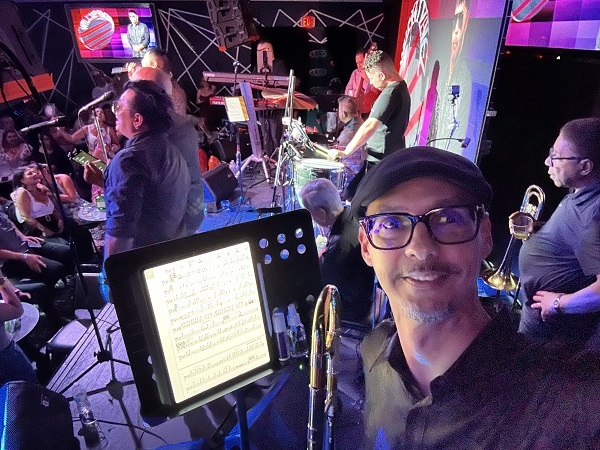
Military life and musical activities during those years
Upon graduating from the university, Félix was commissioned as an officer in the U.S. Army, following his father’s example, who was perfectly capable of meeting his obligations in the military and continuing to exercise his passion for music without having to give up either.
As fate would have it, the artist met up with a former colleague from Orquesta Innovación, which led them to revive their passion for music and to create Orquesta Ideal, with which he spent eight years at Fort Bragg (U.S. military installation), North Carolina, his first stop as an officer.
Over the years, he was assigned to units in Spain, Germany and Korea. It didn’t matter where he went because there were always Puerto Ricans and Latinos eager to get together to make music, which Felix took advantage of to be in touch with music, whether as a trombonist or a DJ.
When asked if these events in which he was involved in were open to the public, he said yes in most cases, as military bases allowed entry to anyone, but unfortunately that changed with the Twin Tower Bombings on 9/11.
Berklee College of Music
During the last years of his military career, Felix studied production, mixing and remastering at Berklee College of Music in order to go preparing for his return to music once his retirement was official.
In addition to playing the trombone and arranging, the musician also loved production, editing, mixing and mastering, so he wanted to learn much more about all of these areas and thus have more control over his own work.
Given that the Covid-19 pandemic was starting at that time, his hours at the military base where he worked were significantly reduced, which he took full advantage of to dedicate more time to school and continue growing as a professional musician.
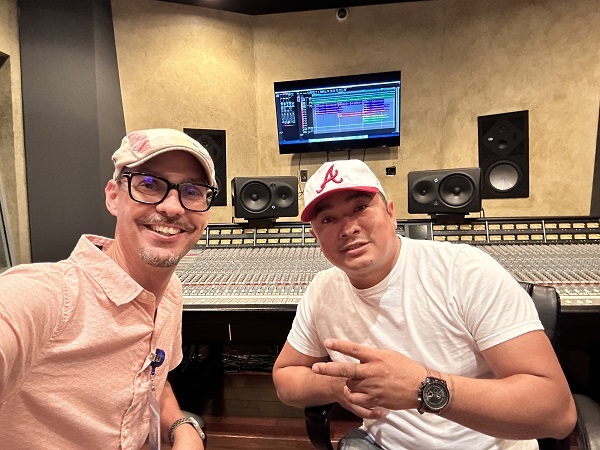
‘‘Con La Música Por Dentro’’
In the year 2021, Felix released his first EP titled ”Con La Música Por Dentro”. In a world still hit by the pandemic, the artist found it very difficult to record and promote his first solo musical work.
He wanted to record with live musicians, but because of this same situation, it was not possible, so there were endless backing vocals he had to do and instruments he had to play himself in order to make the EP happen, so his name is the one that predominates in almost all the credits of the material.
Fortunately, he succeeded to establish a recording studio at home and was supported his friend and singer João José, who recorded voices, piano and bass for the three tracks that make up the EP.
Atlanta
When we wanted to know why he chose Atlanta as his final destination to settle permanently, he told us that he did it to support his wife, who has got a good job in that city. He remembered the time when he started in the army and his wife and daughter always followed him wherever he traveled for his military duties, so he considered that it is time to return everything his partner has done for him and decided to follow her this time.
He had to look a little to meet musicians and re-weave those connections in the industry and the Latino community in Atlanta, so he had to start from scratch in that sense. The good thing is that everything worked out for him and, as soon as he arrived in Atlanta, he was contacted to play with Willie Gonzalez. The bandleader liked his skills as a musician and offered him to continue playing with them, and so it has been to this day.
Read also: Four nationalities united in Ladama





































